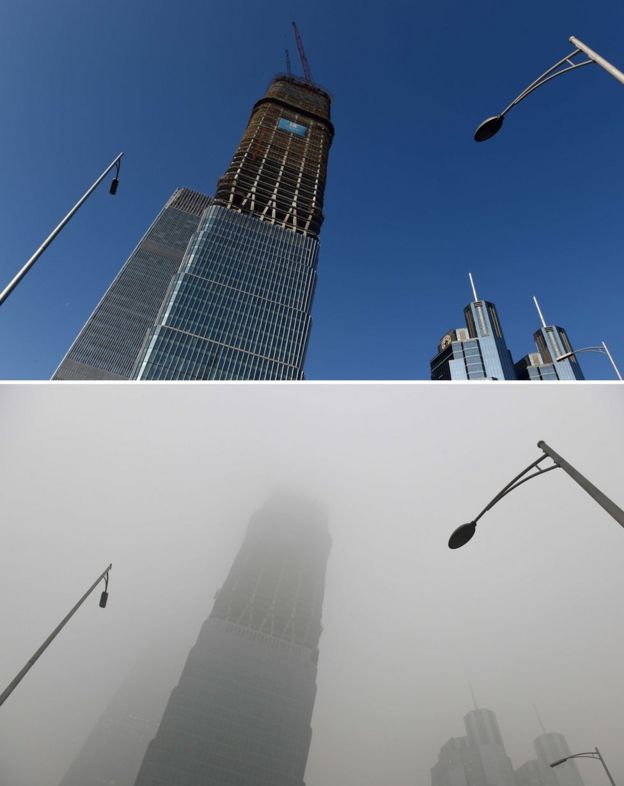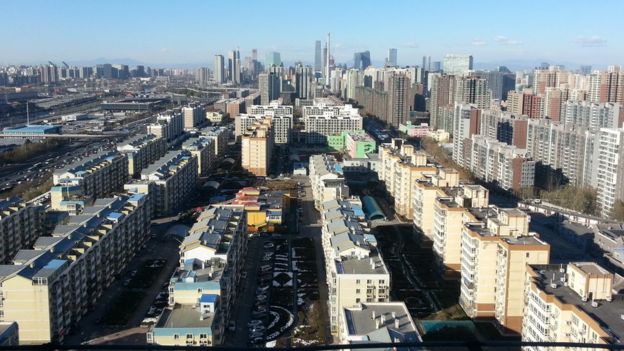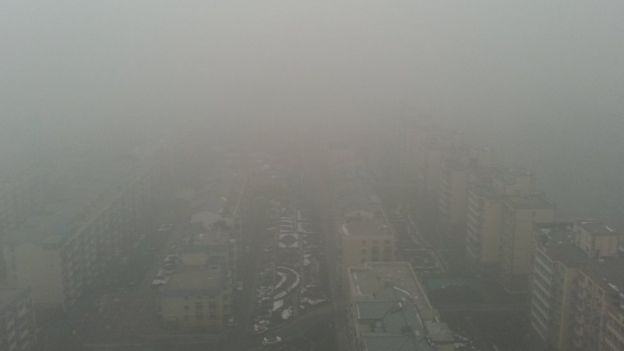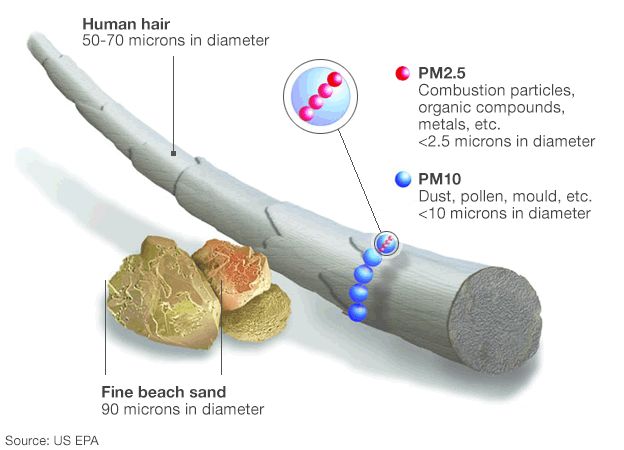China pollution: Beijing issues first red smog alert
BBC
Schools in Beijing are to close and outdoor construction to stop after the Chinese capital issued its first “red alert” over smog levels.
The red alert is the highest possible, and has not been used in the city before, the state-run Xinhua news agency says.
Authorities expect more than three consecutive days of severe smog.
Cars with odd and even number plates will be banned from driving on alternate days.
The alert comes as China, the world’s largest polluter, takes part in talks on carbon emissions in Paris.
Current pollution levels in Beijing are actually lower than last week’s, but the red alert has been placed because of levels expected over the coming days.

The order will last from 07:00 local time on Tuesday (23:00 GMT on Monday) until 12:00 on Thursday, when a cold front is expected to arrive and clear the smog.
China’s CCTV news channel reported at the weekend that some parts of Beijing had visibility of only 200m (660 feet).
In pictures: Smog’s effect on skyline
The smog film taking China by storm
 AFP/Getty Images
AFP/Getty Images Sam
Sam Sam
SamCoal-powered industries and heating systems, as well as vehicle emissions and dust from construction sites, all contribute to the smog which has been exacerbated by humidity and a lack of wind.
At 18:00 local time (10:00 GMT) on Monday, the air pollution monitor operated by the US Embassy in Beijing reported that the intensity of the poisonous, tiny particles of PM 2.5 was 10 times above the recommended limit.
Analysis: Matt McGrath, BBC environment correspondent, Paris
China’s air quality is a key factor in its push for a new global deal on climate change.
Its negotiators here point to their continued investment in renewable sources of energy, in an effort to cut down on coal consumption, particularly in urban areas. Around 58% of the increase in the country’s primary energy consumption in 2013-14 came from non-fossil fuel sources.
These efforts to go green may not be having an immediate effect on the air in Beijing but they have had an impact on global output of carbon dioxide. This year’s figures, just published, show carbon levels have stalled or declined slightly even while the world economy has expanded.
A strong agreement here in Paris won’t immediately solve China’s air woes, but if it ultimately pushes down the price of renewables even further, it could play a part in solving the issue long term.
What are PM 2.5 particles?

- Particulate matter, or PM, 2.5 is a type of pollution involving fine particles less than 2.5 microns (0.0025mm) in diameter
- A second type, PM 10, is of coarser particles with a diameter of up to 10 microns
- Some occur naturally – eg from dust storms and forest fires, others from human industrial processes
- They often consist of fragments that are small enough to reach the lungs or, in the smallest cases, to cross into the bloodstream as well
The level in Beijing reached more than 256 micrograms per cubic metre in some of the worst-affected areas. The World Health Organization considers 25 micrograms per cubic metre to be a safe level.
Activists said the level hit 1,400 micrograms per cubic metre in the north-east city of Shenyang last month, saying it was the worst seen in China.
In comparison, London’s PM 2.5 average on 6 December was 8 micrograms per cubic metre, the Environmental Research Group at King’s College said. It said more than 70 was reached during spring 2014 and 2015, and the highest was on bonfire night, 5 November 2006, at 112.
Last week, activists from Greenpeace had urged the Chinese government to declare a red alert. Another Chinese city, Nanjing, issued a red alert in December 2013.
On 30 November, Beijing issued an orange alert – the second-highest of the four-tier system adopted in 2013.
Correspondents say Chinese officials had been unwilling to commit to hard targets on reducing carbon emissions, but have now realised that the dependence on fossil fuels has to stop.
President Xi Jinping vowed to take action on the emissions at the current global climate change talks in Paris.
—
http://www.bbc.com/news/world-asia-china-35026363


